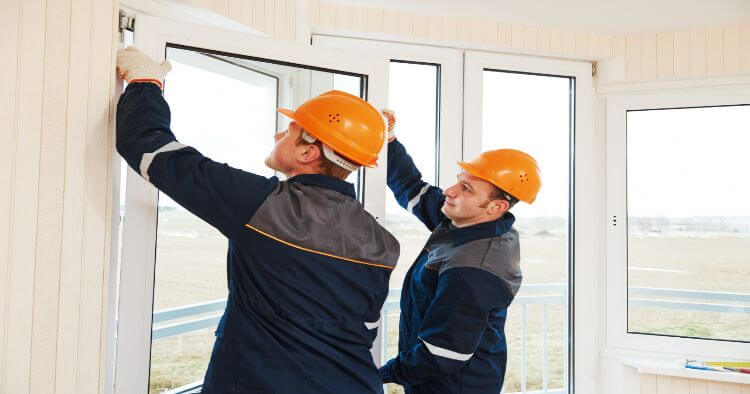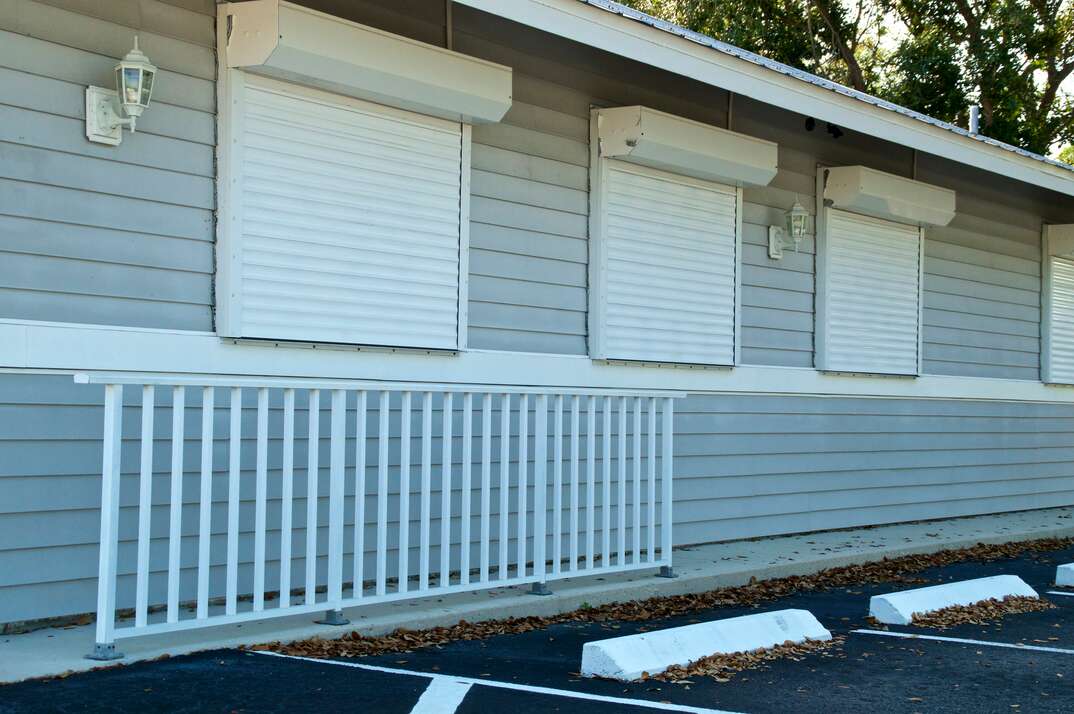How much does it cost to replace a Window?

Windows are not only my portal to the outside world, but they are some of the first things people notice from the curb. And as diligent as I am with cleaning the interior glass, I still couldn’t help but notice how dingy my ageing windows were beginning to look.
A little crack in the frame here, a draft there; I couldn’t deny that it was time to upgrade these essential fixtures. Little did I know how much I would have to consider beyond aesthetics when it comes to replacing a pane of glass - and each decision can affect your spending.
Now, I’m going to share with you everything I learned about the true cost to replace a window.
Signs your windows need to be replaced
Removing old fixtures and installing new ones is no easy feat, and window costs can easily add up, so you should have a solid reason to take on the project. Quality Window & Door estimates that residential windows last anywhere from 15-20 years, depending on their quality and material. A well-maintained window could last beyond the two decades, but if your home is approaching the 20-year mark, you might want to closely inspect each pane for wear.
Sometimes, windows need to be replaced before they reach the ripe old age of 20. Always be on the lookout for signs that your windows could need to be replaced, including:
- Feeling drafts: When the window’s seal becomes worn down or develops leaks, you may feel cold air entering your home during winter months and increase your energy bill. While some temporary insulation kits can help block the draft, it may be time to upgrade your windows for a more permanent solution.
- Rotted or cracked frames: This is especially common with wooden frames. A rotted, cracked or warped frame can be the result of indoor wear and tear or the elements. Large cracks and holes can render your window useless, as air and debris can easily enter your home.
- Condensation between panes: Do your windows look foggy, especially right after it rains? This is a common problem with double-pane windows and means the seal is broken and moisture has gotten between the panes. Not only can this distort your view and look unpleasant, but it means your windows are not working efficiently.
- Increased sound penetration: No, the garbage truck down the street is no louder than usual. So why has it been waking me up recently? Although it happens gradually, WTHR explained that as a window’s sealment wears down over time and thin cracks form, more sound from the outside can pass through.
- Functionality issues: If you’re having trouble opening or closing your windows, it can mean the frame or pane is off-balance. This can naturally occur over time as the foundation of your home settles. You may feel like your pane is resisting opening, or can’t stay open easily. This means it’s time to get new windows that fit your home.
Replacement windows vs new home windows
As you shop for new options, you’ll probably hear a lot about two distinct fixture options: replacements and new-homes. Don’t be confused by the names, replacement windows are new as well, they just typically serve a different purpose than their counterpart.
Window Nation provided a comprehensive breakdown of the two: First, as their name implies, replacement windows are specifically designed to replace existing home windows. They are commonly used in renovation projects because they can be custom-made if the existing sizes and shapes are not to your liking.
You might also hear these models referred to as retrofits. This option is appealing to most homeowners because of the window styles available, and the cost to install them is relatively inexpensive because the home frame doesn’t need to be unprotected to install the replacement.
On the other hand, new-home windows are specifically designed for recently constructed houses or additions. They need to be installed on the framing directly, with the use of a nail fin frame. Due to the more extensive work involved, these windows are best installed before a home is completely built or if you’re removing the home siding and exposing its frame.
While both options can be utilized to replace a window, most homeowners choose replacement fixtures because they are easier and less expensive to install.
Factors that affect price
According to Remodeling Expense, homeowners pay an average of $500 to fully replace one window in their home. As you can see, if you need to replace all of your windows (which is best if you want a uniform look) you’ll need to multiply this price by how many fixtures you’ll need.
There are other factors that affect the final cost to replace a window as well, including:
Type of window
I’ll be the first to admit I had no idea how many window options there were until I started looking. While you may just want to stick with the original style, The Spruce detailed some other types of windows you could replace them with and how it could affect your budget.
- Awning windows open out by pivoting from the top of the sash operated by a crank. Depending on the frame, these are a relatively inexpensive option but can be an obstruction if close to a walkway.
- Bay windows are ideal for creating angles. Most open on the sides and are commonly used in kitchens and family rooms for their aesthetic. You’ll likely pay more than the average cost for these windows due to their craftsmanship and installation.
- Basement windows are the most inexpensive to install due to their smaller size and accessibility, but you might not want to DIY this replacement. A professional window installer will ensure the fixture is sealed correctly to prevent leaks that could damage the foundation.
- Casement windows are similar to awning windows, in that they open from the side with a crank. While they provide ample light and are typically better for sealing off drafts, they can also get in the way since they open outward. They are one of the most cost-effective options.
- Double-hung windows allow both the bottom and top sashes to move up and down.
- Single-hung windows allow only the bottom sash to move up or down. Double- and single-hung windows are some of the most common styles, and are ideal if you utilize window air conditioners. The fixture itself can cost as little as $200.
- Sliding windows open sideways for clear views and spectacular ventilation, but can’t seal as tight as casement windows. They are typically around the same price as a single-hung window.
It’s important to note that if you require a unique style or your window frames are not standard sizes, you might need to place a custom order. A contractor can take measurements and help you with your vision that a manufacturer will make to your requirements. This is naturally more expensive, but can be worth it if you want one-of-a-kind windows to compliment your home.
Frame material
Different window frame types also have distinct replacement costs and can drastically affect the way your windows look. Some of the most common materials used for window frames include:
- Aluminum: According to EcoHome, this is one of the sturdiest and durable frame materials. It requires little maintenance, but is not good at preventing heat loss. Its price falls in the mid-range for materials.
- Composite: Mixed components of vinyl with wood fiber create a sturdy, aesthetically pleasing frame. Due to the mix of materials, you will be paying more than you would for a vinyl frame, but less than a wood.
- Fiberglass: Lightweight yet durable, these frames are a strong investment because they are great insulators. They are on the pricier side, usually upwards of $500 a frame.
- Vinyl: By far the most cost-effective option, costing as little as $250 a frame. They are durable and low-maintenance, but may not be as attractive as wood to some homeowners.
- Wood: Can be the priciest kind of frame due to the craftsmanship involved. They also require regular maintenance and are especially susceptible to cracking and wear from the elements.
Labor & Placement
The more windows you need to replace, the more you’ll need to expand your budget in both materials and labor costs. The cost estimate to install a window on upper floors will also more likely be higher than for the first story due to the complexity of the job (i.e. more equipment is needed).
Remodeling Expense noted that installing a window is usually a three-person job for upper stories. Two people are needed outside to install the window, and one inside leveling it into the interior. The average installation cost for labor alone is around $300 per window, so make sure to factor these expenses into your budget.
Think about your surroundings
When choosing to replace your windows, you may want to take into consideration where you live and what features would benefit your home. If your area is prone to hurricanes or other severe weather, you may want to invest in storm windows or impact-resistant glass.
If your property is on a busy street, requesting triple-pane windows can help reduce noise and increase energy savings. According to EcoLine Windows, one triple-pane window can eliminate 15-20% more noise than a single pane of glass.
With the many different types of windows and materials available, you’ll be sure to find an option that is both functional and matches the aesthetic of your home.
Are energy-efficient windows worth it?
Energy-efficient windows may come with a slightly higher price tag, but they can help homeowners save hundreds of dollars annually on energy costs year round. In fact, Energy Star estimated that you can save $101 to $583 a year when replacing single-pane windows with Energy Star-certified fixtures.
There are many ways an energy-efficient window is measured, but one important factor is how well it reflects sunlight. Efficient Windows Collaboration explained that standard clear glass windows only reflect 16% of the sun’s radiation, but when treated with low-e coatings, the glass can reflect 96% of the incident long-wave. Low-e costs around $14 a square foot, according to Home Advancement.
Double-glazed windows can also serve the same purpose, creating a heat barrier between your home and the outside. Some window companies also use argon gas to increase the energy efficiency and general performance of thermal double- or triple-pane windows, according to The Balance.
Home improvements are important and key to home maintenance. Another smart investment is being prepared for emergency home repairs. See how having plans from HomeServe can help with the costs of covered home repairs.


